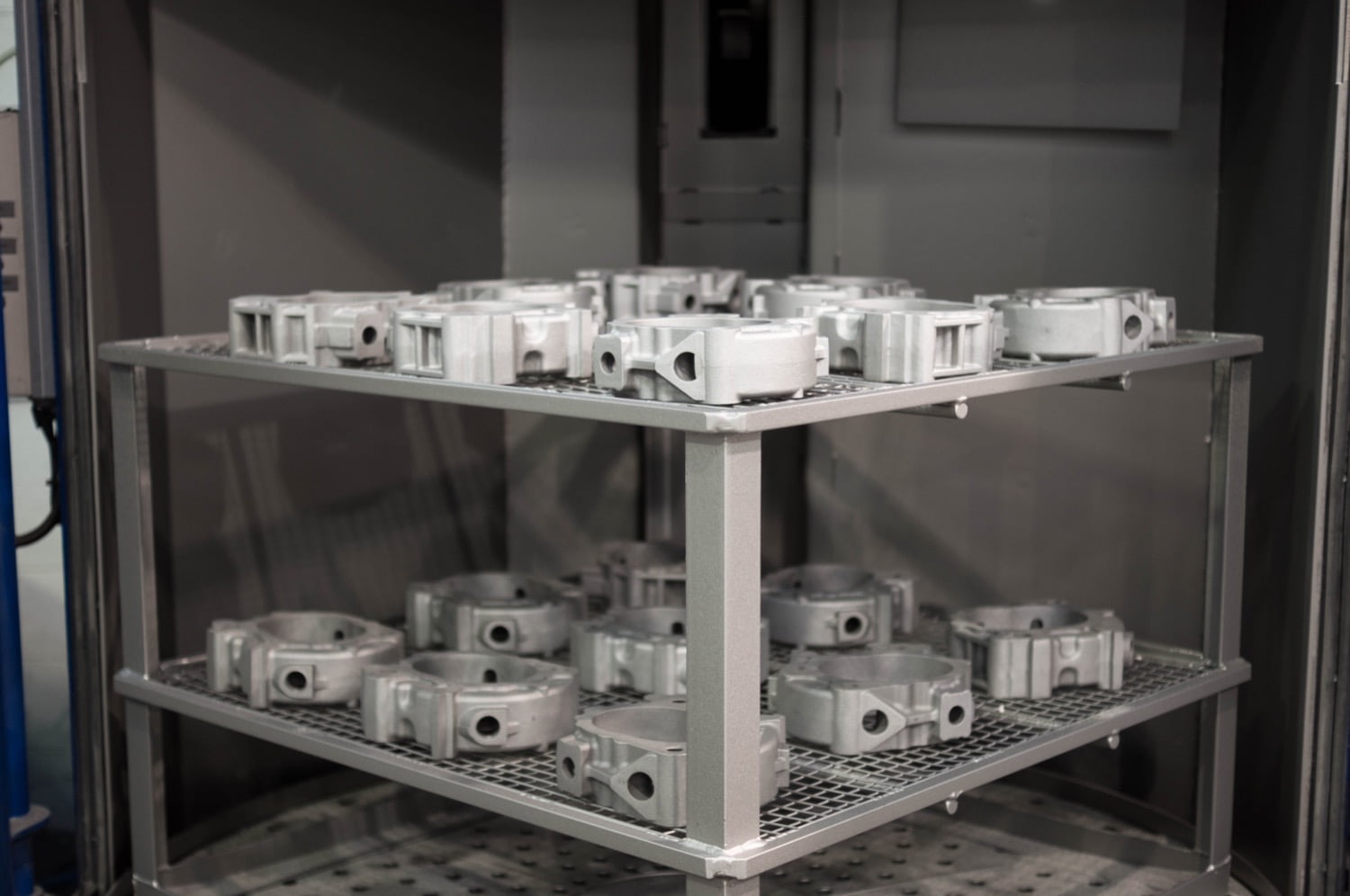Published - 10th Aug 2017

Shot peening is a finishing technique designed to increase component fatigue life and to reduce cracking in parts operating in high-stress environments. For this reason, it is widely used in the aerospace and automotive industries for safety-critical parts in aluminium sand casting.
Many surface treatments, such as milling, turning and welding, can create tensile residual stress in parts, which can lead to cracking and stress erosion on the surface. Shot peening converts tensile residual stress into compressive residual stress – changing the mechanical properties of the piece. The compressive stress layer strengthens the metal and enhances part life. In fact, research has shown that shot peening can increase the fatigue strength of aluminium sand casted components by up to 1000%.
The process can vary slightly, in terms of the materials and machinery used, but the general principles are always the same.
Our engineers use the following process; the aluminium sand casted part is placed on a spinning wheel in an enclosed cabinet. Stainless steel ball bearings are propelled at high speed at the surface of the casting. The impact of each shot produces a small indentation – which compresses the sub-surface layer and strengthens the metal. Cracks cannot form in this compressive environment.
By the end of this process, the part is covered in multiple, overlapping indentations, with even coverage across the surface. These indentations are only shallow so they do not add significantly to the stress.
The time, angle, size, speed and shot material all influence the degree of stress induced and, ultimately, the part life. Over peening can itself cause cracking, so this process must be carefully controlled and managed.
The intensity of the shot peen is vitally important. This is calculated by a patented formula (known as the Almen Strip) – which was developed by John Almen. Coverage of the part is also critical to achieve the optimum results. International standards govern the use of shot peening in the aerospace sector and other industries.
Modern shot peening was developed in the 1920s. However, the principles date back to ancient times. The knights of the crusades used hammering techniques to reinforce their armour and swords. In fact, the word ‘peen’ means to strike with a hammer.
The techniques have evolved over the years. In the early 20th Century, European race cars had the fillets of their crankshafts hand peened and, by the 1920s, automotive engineers in the US were also looking at ways to increase the fatigue life of car parts using shot peening.
Nowadays, this process is used to finish aluminium sand cast parts such as springs, cylinder heads, gear parts, camshafts and turbine blades. Indeed, the technique has been widely used in Formula 1 racing for many years.
At Haworth Castings, we have a wealth of experience in finishing techniques. Give us a call to find out how we can support your engineering needs. Please call us today on +44 (0)1794 512685 or email us: sales@haworthcastings.co.uk
If you have a project, talk to our experienced sales team
Contact us